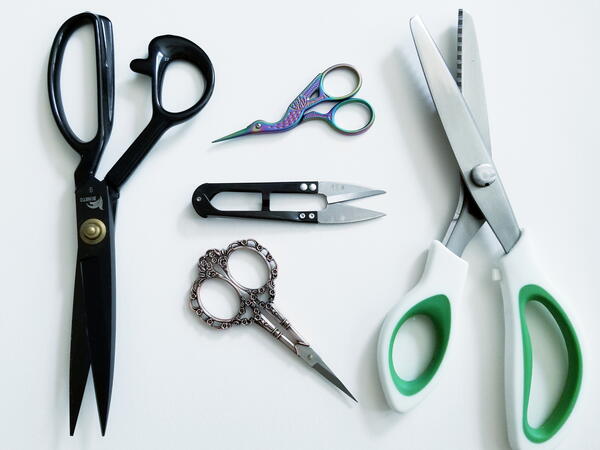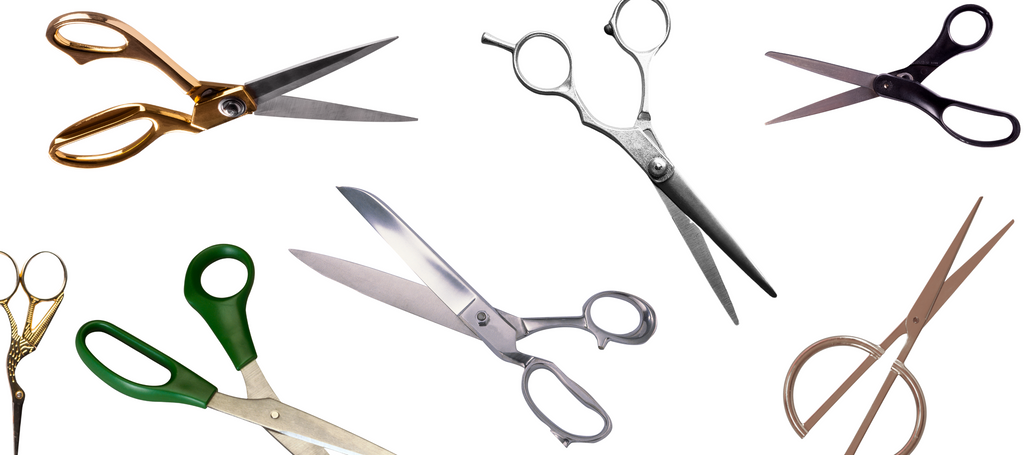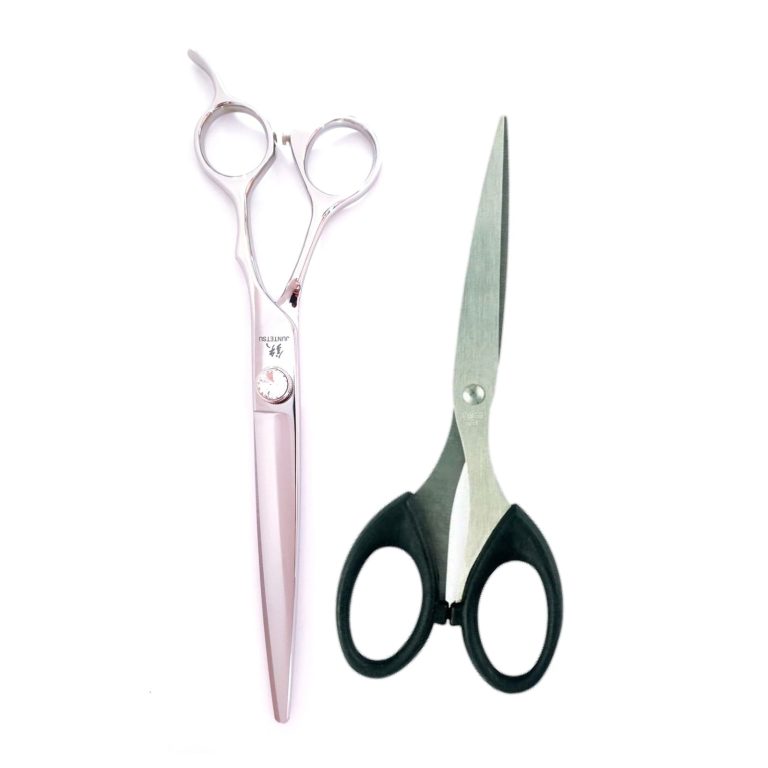Have you ever reached for a pair of scissors only to find they aren’t quite right for the task at hand? You’re not alone.
Scissors are an essential tool in both your kitchen and office, yet each type serves a different purpose. Understanding these differences can save you time, effort, and even frustration. Imagine cutting a piece of paper with kitchen scissors or attempting to slice through raw chicken with office scissors.
The results are less than ideal, right? You’ll discover how to distinguish between kitchen and office scissors, ensuring you always have the right tool for the job. This knowledge might just revolutionize how you approach everyday tasks. Let’s dive into the world of scissors and unlock the secrets to making your life a little bit easier.
Blade Design
When choosing scissors for your kitchen or office, understanding blade design can make a big difference in your everyday tasks. The blade design impacts how well scissors can perform specific functions. But have you ever wondered why your kitchen scissors seem to cut through tough meat effortlessly, while your office scissors glide through paper with precision? Let’s delve into the finer points of blade design to discover what sets these two types of scissors apart.
Material Composition
The material used in the blade’s composition is crucial for its performance. Kitchen scissors often have stainless steel blades. This material resists rust and can handle moisture and acidic foods. You want something durable and easy to clean when dealing with food.
Office scissors, on the other hand, frequently feature carbon steel blades. These are sharper and allow for precise cuts. It’s ideal for cutting paper, cardboard, and other office supplies. Carbon steel maintains its sharpness longer, which is a boon for busy office work.
Shape And Size
Blade shape and size play a significant role in functionality. Kitchen scissors usually have thicker blades with a serrated edge. This design helps grip and cut slippery items like chicken or fish without much hassle. It makes food preparation more efficient.
Office scissors have thinner, straight-edged blades. This enables smooth, clean cuts on paper and other flat materials. Their compact size makes them easy to maneuver for detailed tasks like cutting out shapes or trimming documents.
So, the next time you reach for a pair of scissors, think about what you’re cutting. Are you dealing with a tough steak or a stack of paper? Considering blade design could save you time and effort. What other tasks could be made easier by using the right scissors? Let your hands do the talking and find out!

Credit: www.favequilts.com
Handle Construction
Handle construction plays a crucial role in scissors functionality. In both kitchen and office scissors, the handle design impacts comfort and usability. Understanding these differences can improve your cutting experience.
Grip Comfort
Grip comfort matters for long-term use. Kitchen scissors often have cushioned handles. This reduces strain during repetitive tasks. It ensures a firm hold, even with wet hands. Office scissors, on the other hand, typically have smooth, hard plastic grips. They are designed for lighter tasks. Comfort is secondary to precision in office settings.
Ergonomic Design
Ergonomic design is essential for preventing hand fatigue. Kitchen scissors often feature larger handles. This accommodates different hand sizes. It allows for power cuts through tough materials. Office scissors focus on precision. Their handles are sleek and lightweight. They prioritize control over force. Ergonomics in both types cater to their specific uses. Understanding these nuances helps in choosing the right scissors for your needs.
Purpose And Functionality
Understanding the purpose and functionality of scissors is crucial. Kitchen scissors and office scissors serve different roles. Each is designed for specific tasks, making them essential tools in their own right. Knowing these differences helps in choosing the right pair for your needs. This section explores cutting techniques and usage scenarios.
Cutting Techniques
Kitchen scissors often feature serrated blades. These blades provide a grip on slippery food items. They can cut through meat, vegetables, and herbs effortlessly. Office scissors usually have straight blades. These are ideal for precision cutting. They excel in slicing through paper, thin plastic, and light materials.
Kitchen scissors may include multiple cutting styles. They can snip, slice, and even crush garlic cloves. Office scissors focus on clean, straight cuts. They enable efficient trimming and shaping. Each pair serves its unique cutting purpose effectively.
Usage Scenarios
Kitchen scissors find their place in culinary tasks. They assist in preparing meals and opening food packages. They are handy for cutting poultry and trimming fat. Office scissors fit well in professional settings. They help in crafting documents and cutting labels. They are essential in cutting papers and opening mail.
Kitchen scissors often have durable handles. These are designed for comfort during prolonged use. Office scissors feature lightweight designs. These ensure ease of use for quick tasks. Selecting the right scissors depends on your specific needs. Understanding their functionality improves efficiency.
Durability And Maintenance
Kitchen scissors are built to withstand frequent use, cutting through tough materials like meat and vegetables. Office scissors, designed for lighter tasks, require less maintenance and are often used for paper and light crafting. Both types need regular cleaning to ensure optimal performance.
When choosing between kitchen and office scissors, understanding their durability and maintenance can save you time and money. Each type of scissor is designed with specific tasks in mind, and with that comes different levels of durability and maintenance needs. Knowing how to care for your scissors will ensure they serve you longer and perform better.Cleaning Methods
The cleaning methods for kitchen and office scissors differ significantly. Kitchen scissors often deal with food residue, making them prone to rust if not cleaned properly. A quick rinse under warm water followed by drying with a towel can prevent this. Office scissors, on the other hand, primarily cut paper and other non-liquid materials. A simple wipe with a dry cloth is usually sufficient. If they get sticky from cutting tape, a dab of rubbing alcohol can help.Longevity Factors
Several factors contribute to the longevity of scissors. Kitchen scissors are often made with stainless steel to resist corrosion from moisture. Regular sharpening is crucial to maintain their cutting edge. Office scissors may not require sharpening as frequently, but their longevity depends on the materials they cut. Overuse on thick materials like cardboard can dull them quickly. Have you ever noticed your office scissors losing their edge after a heavy crafting session? That’s a sign they need some tender loving care. Maintaining both types of scissors involves regular checks and occasional sharpening. Consider investing in a simple sharpening tool to keep them in top shape. It’s a small step that can prolong their life substantially. When was the last time you sharpened your scissors? Regular maintenance isn’t just for the toolbox; it’s essential for your everyday tools too. Addressing these aspects can make your scissors last longer and perform efficiently. Remember, the right maintenance approach can save you the hassle of replacing them frequently.Safety Features
When choosing scissors for the kitchen or office, safety is crucial. Both types have specific features to ensure safe use. Understanding these safety features can help you make an informed decision.
Blade Safety
Kitchen scissors often have thicker blades. They cut through tough materials like chicken bones. Blades are usually serrated for grip. This prevents slipping while cutting. Office scissors have thinner blades. They are designed for paper and other light materials. Blades are smooth to ensure clean cuts. Both scissors may have rounded tips. This reduces the risk of injury.
Handle Safety
Handles play a big role in comfort and control. Kitchen scissors often have rubber grips. They prevent slipping, especially with wet hands. This feature ensures safe food preparation. Office scissors usually have plastic handles. They are designed for prolonged use without discomfort. Handles are lightweight for easy maneuvering. Both types ensure a firm grip. This minimizes accidental cuts.

Credit: santokuknives.co.uk
Price And Accessibility
When choosing between kitchen and office scissors, price and accessibility matter. Understanding these aspects helps you make an informed decision. Let’s explore the cost and availability of these essential tools.
Cost Comparison
Kitchen scissors often come with a higher price tag. This is due to their specialized design and durable materials. They are crafted to handle tough tasks like cutting meat and herbs. Office scissors, on the other hand, tend to be more budget-friendly. They are made for light tasks like cutting paper and opening packages. The materials used are usually less expensive. This price difference reflects their distinct uses and construction.
Availability
Office scissors are widely available in various stores. You can find them in stationery shops, supermarkets, and online. Their widespread demand makes them easy to purchase. Kitchen scissors might be less commonly found in some stores. They are more likely to be available in kitchenware or specialty shops. Online platforms offer both types, but office scissors are often more stocked. This difference in availability aligns with their primary functions.

Credit: www.jpscissors.com
Frequently Asked Questions
What Is The Difference Between Kitchen Scissors And Regular Scissors?
Kitchen scissors are designed for food tasks, featuring serrated blades for grip and durability. Regular scissors suit general cutting needs with smooth blades. Kitchen scissors often have features like bottle openers or nutcrackers, while regular scissors focus on precision in paper or fabric cutting.
What Is A Kitchen Scissors Used For?
Kitchen scissors are used for cutting herbs, trimming meats, and opening packaging. They offer precision and control in food preparation tasks, making them essential for efficient cooking. Their sharp blades and ergonomic design enhance usability, providing versatility in chopping, snipping, and slicing kitchen ingredients effectively.
Can I Use Regular Scissors To Cut Food?
Using regular scissors to cut food is not recommended. They may harbor bacteria and aren’t food-safe. Opt for kitchen shears designed for food use instead. Kitchen shears offer better hygiene and precision, ensuring safe and efficient food preparation.
Can I Use Kitchen Scissors To Cut Fabric?
Kitchen scissors can cut fabric but are not ideal. Fabric scissors provide cleaner, more precise cuts. Using kitchen scissors may dull them quickly and damage the fabric. For best results, invest in quality fabric scissors designed specifically for sewing tasks.
This ensures longevity and accuracy in your sewing projects.
Conclusion
Kitchen scissors and office scissors serve distinct purposes. Kitchen scissors cut food and open packages. They often have strong blades and easy grips. Office scissors handle paper and light materials. They are lighter and more precise. Choosing the right scissors depends on your needs.
For cooking, go for kitchen scissors. For paper tasks, office scissors work best. Both types are essential in their settings. Knowing their differences helps in making the right choice. Always keep them clean and sharp. This ensures safety and efficiency.


